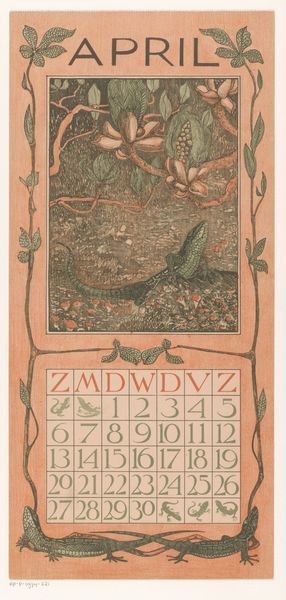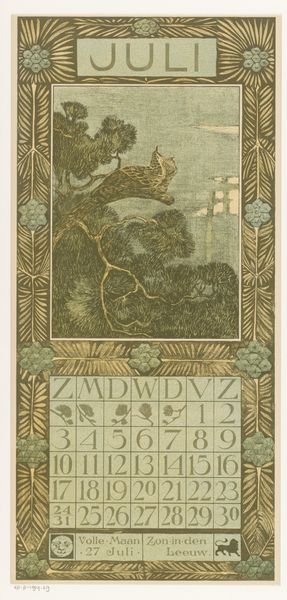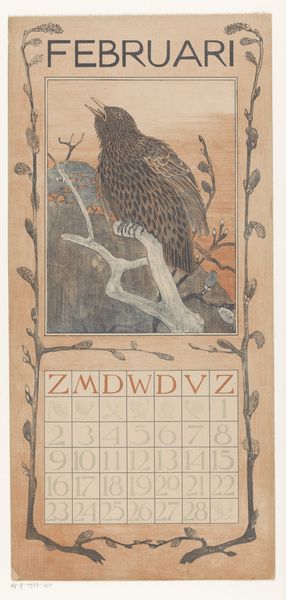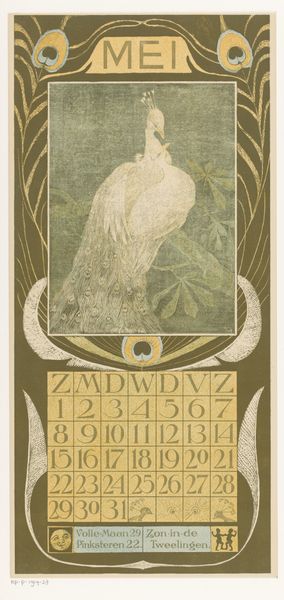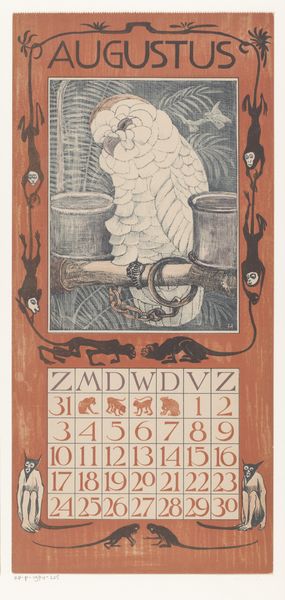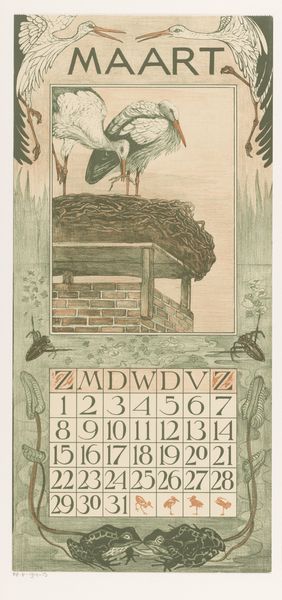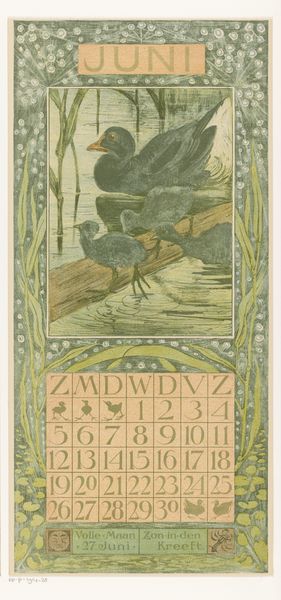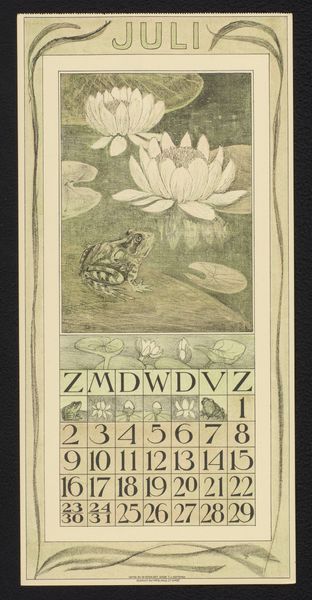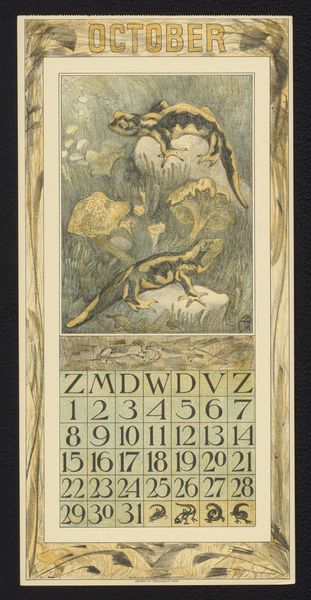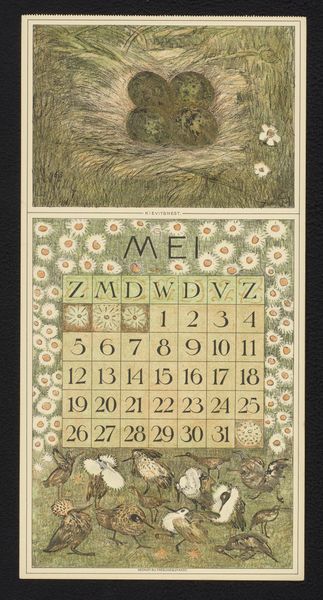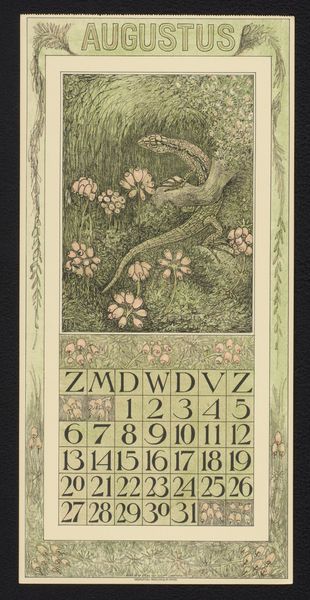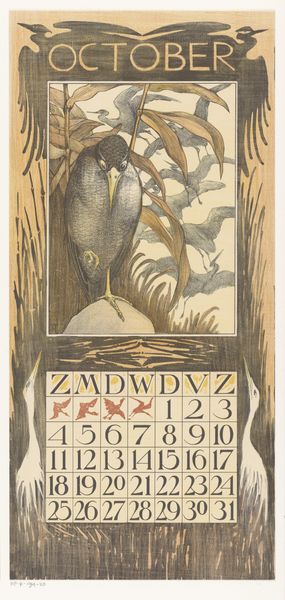
Dimensions: height 445 mm, width 210 mm
Copyright: Rijks Museum: Open Domain
Curator: Immediately, this calendar page evokes a hushed, woodland atmosphere, a late summer stillness about to tip into autumn. It's beautifully observed. Editor: Theo van Hoytema created this calendar sheet for September in 1901. Executed as a linocut print, it offers an intriguing glimpse into the aesthetic sensibilities of the time, fitting somewhere within Impressionism and elements of the burgeoning Ukiyo-e interest in the West. Curator: Absolutely. It's interesting how the calendar format itself is integrated so completely. September sits at the top, almost like the forest canopy. Below, we have the world of the forest floor. Editor: The choice of rabbits as the central motif feels symbolic too, doesn’t it? Rabbits often represent abundance and a connection to the earth. It gives a lens into late 19th and early 20th-century views on natural bounty. Curator: Exactly! The arrangement feels significant – notice the contrast between the active, alert rabbit and the others, nestled together almost like a cairn. To me it suggests an observation and an invitation for self-reflection on being watchful but also being community-minded. Is it guarding the group or merely posing above? Editor: I find it interesting that a functional item like a calendar is elevated to such an artistic and symbolic plane, reflecting back our complex relationship with the natural world. The calendar is peppered with smaller illustrations of beetles, crickets, and spiders on the days themselves! It reminds us of the pervasiveness of the insect realm alongside a dominant mammalian focus. Curator: Yes, and I'm drawn to the borders formed by delicate tendrils that frame the whole composition, softening the otherwise rigid lines of the calendar grid. It reinforces the cycles and rhythm that are fundamental in both art and in the passage of time itself. Editor: Overall, it strikes me as a work that’s not just documenting a specific time or place, but rather encapsulating a broader cultural dialogue about nature, time, and our place within both, particularly in that liminal space between centuries. What do you take away? Curator: For me, it's a poignant reminder that every image we encounter carries with it an accumulation of meaning – symbols we interpret through our individual, cultural experiences but always building on what came before. Editor: A beautiful, yet somewhat commonplace image of printed ephemera, then—or now? Each piece has so many stories layered within its materiality.
Comments
No comments
Be the first to comment and join the conversation on the ultimate creative platform.

